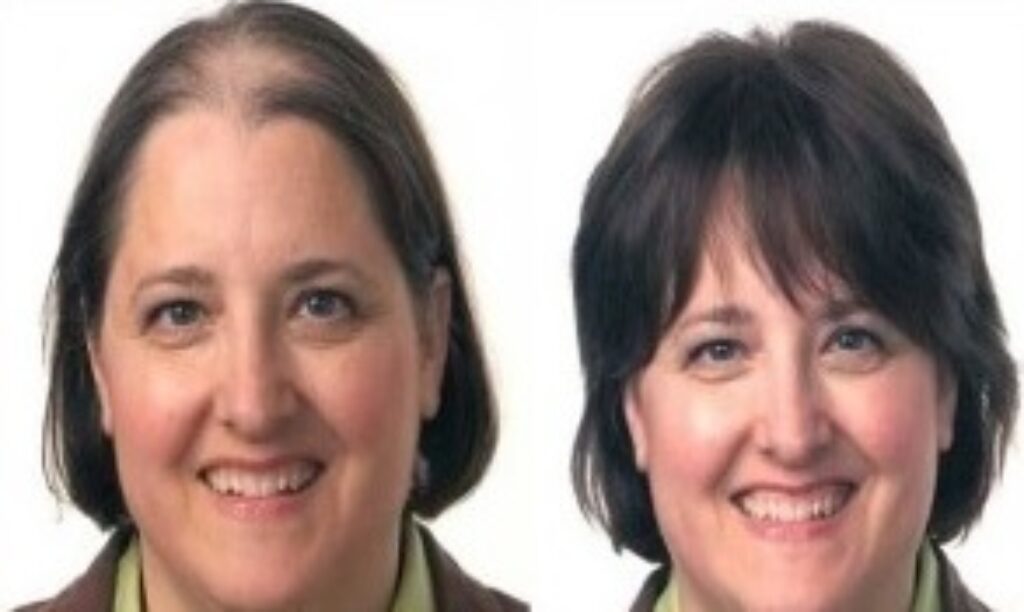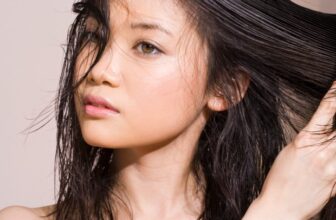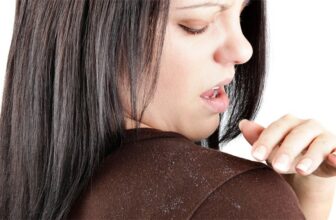
This post dives deep into the phenomenon of how to stop hair from falling out in shower – what is normal and what is not, why it happens, and, most importantly, what you can do about it.
Few moments trigger quite the same sinking feeling as looking down at the shower drain and seeing a clump of your precious hair spiralling away. What feels like a dramatic loss as the water swirls around you is often a daily reality for many, sparking anxiety and questions about health, age, and appearance. While losing some hair in the shower is perfectly normal, seeing what feels like half your head can be genuinely distressing. Understanding the root causes of increased shedding is key to figuring out how to stop hair from falling out in shower and elsewhere.
A Shower Full of My Hair
Let’s start by acknowledging the feeling. For many, the shower is where they most visibly confront hair shedding. The combination of wet hair clinging together and the motion of washing amplifies the appearance of loss. What might be 50 hairs scattered throughout the day looks like a shocking amount when collected in one place.
It’s crucial to understand the natural hair growth cycle. Each hair strand goes through three main phases:
- Anagen (Growth Phase): This is the active phase, lasting several years. About 85-90% of your hair is in this phase at any given time.
- Catagen (Transition Phase): A short phase (about 10 days) where hair growth stops and the follicle shrinks.
- Telogen (Resting Phase): This phase lasts about 3 months. At the end of the telogen phase, the old hair falls out, and a new hair begins the anagen phase in the same follicle.
Shedding is the natural end of the telogen phase. It’s estimated that losing anywhere from 50 to 100 hairs per day is completely normal as part of this cycle. Seeing hairs in the shower is simply the most common time they are dislodged as you lather, rinse, and perhaps detangle. The concern arises when that number seems consistently and significantly higher than your personal norm, or when you notice thinning elsewhere.
Why We Fear Hair Loss?
Our hair is deeply intertwined with our identity, self-esteem, and how we present ourselves to the world. For many, it’s a symbol of youth, health, and vitality. Losing hair, whether gradually or suddenly, can feel like losing a part of that identity.
The fear of hair loss stems from several factors:
- Appearance: Thinning hair or bald patches can significantly alter one’s appearance, leading to self-consciousness and dissatisfaction with one’s reflection.
- Aging: Hair loss is often associated with getting older, even though it can happen at any age due to numerous factors.
- Health Concerns: Sometimes, hair loss can be a symptom of an underlying health issue, adding health anxiety to the aesthetic worries.
- Societal Pressure: In many cultures, thick, full hair is considered desirable, adding external pressure to maintain it.
- Loss of Control: Hair loss can feel like something happening to you that you can’t stop, leading to feelings of helplessness.
Understanding this emotional backdrop is important. While some shedding is normal, persistent or excessive loss warrants investigation, not just for cosmetic reasons, but for peace of mind and potential underlying causes.
10 Proven Tips Why You’re Losing Your Hair
Excessive hair shedding (telogen effluvium) or gradual thinning (like androgenetic alopecia) can be triggered by a wide variety of factors. Pinpointing the exact cause is crucial for effective treatment. Here are 10 common reasons you might be experiencing more hair loss than usual:
- Stress (Telogen Effluvium): Significant physical or emotional stress (like surgery, illness, a major life event, or even chronic stress) can shock the hair cycle, pushing a large number of hairs prematurely into the resting phase. About 2-3 months after the stressful event, these hairs are shed, often in large amounts.
- Androgenetic Alopecia (Genetic Hair Loss): This is the most common cause, known as male or female pattern baldness. It’s hereditary and involves a genetic sensitivity to androgens (male hormones), causing hair follicles to shrink over time and eventually stop producing hair.
- Nutrient Deficiencies: Lack of essential nutrients like iron (leading to anaemia), protein, zinc, biotin, or other vitamins (especially B vitamins and Vitamin D) can impair hair growth and lead to shedding.
- Hormonal Changes: Fluctuations in hormones, particularly thyroid problems (hypothyroidism or hyperthyroidism), polycystic ovary syndrome (PCOS), menopause, or starting/stopping birth control pills, can significantly impact hair growth.
- Pregnancy and Childbirth (Postpartum Alopecia): During pregnancy, high hormone levels often prevent normal shedding. After childbirth, hormones drop, and the excess hair that didn’t shed during pregnancy falls out in a wave, usually peaking around 3-6 months postpartum.
- Medical Conditions: Certain medical conditions such as autoimmune diseases (like Alopecia Areata, where the immune system attacks hair follicles, or Lupus), scalp infections (like ringworm), or inflammatory conditions can cause hair loss.
- Medications: A wide range of medications can have hair loss as a side effect, including those for blood pressure, depression, arthritis, heart problems, and cancer treatments (chemotherapy).
- Sudden Weight Loss: Rapid weight loss, whether intentional (like crash dieting or bariatric surgery) or unintentional due to illness, can stress the body and trigger telogen effluvium.
- Harsh Hair Care Practices: Excessive heat styling, tight hairstyles (like braids, weaves, or ponytails worn constantly) causing traction alopecia, chemical treatments (perms, relaxers, dyes), or aggressive brushing/towel-drying can damage hair strands and follicles.
- Aging: As people age, the rate of hair growth slows down, and hair strands can become finer, leading to an overall appearance of thinning.
Identifying which of these might be affecting you often requires looking at your lifestyle, health history, and potentially consulting a medical professional.
Hair Loss During Pregnancy
While the list above mentions pregnancy, it’s worth a slightly deeper dive because it’s a common and often concerning experience for new mothers.
During pregnancy, elevated levels of hormones, particularly estrogen, prolong the hair’s growth phase (anagen). This means you shed less hair than usual. Many pregnant individuals enjoy thicker, fuller hair as a result.

However, after delivery, hormone levels plummet back to normal. This dramatic shift causes the large number of hairs that were held in the growth phase to simultaneously enter the resting and shedding phases. This phenomenon, known as postpartum alopecia or postpartum hair loss, typically starts 2-4 months after giving birth and can last for several months. Seeing large clumps of hair in the shower or on your brush during this time can be alarming, especially when coupled with the exhaustion and demands of caring for a newborn.
The good news is that postpartum hair loss is almost always temporary. Your hair growth cycle usually returns to normal within 6 to 12 months after delivery. While you can’t stop the shedding process itself, focusing on good nutrition and managing stress can support healthy hair regrowth.
How to Stop Hair From Falling Out in Shower Due to Stress
Stress is a particularly common culprit behind excessive temporary shedding (telogen effluvium). Unlike genetic thinning, which is often a gradual process, stress-induced hair loss can seem sudden and dramatic, often appearing months after the stressful event.
The mechanism is that stress hormones disrupt the normal hair cycle, forcing hairs into the shedding phase prematurely. While you can’t recover the hair that has already been pushed into this phase, you can encourage regrowth and prevent future stress-related shedding by addressing the root cause: the stress itself.
Here are some actionable strategies to help manage stress and support hair regrowth:
- Practice Stress-Reduction Techniques Regularly:
- Mindfulness and Meditation: Even a few minutes daily can calm the nervous system.
- Deep Breathing Exercises: Simple, immediate stress relief.
- Yoga or Tai Chi: Combine gentle movement with focus and breath.
- Prioritize Sleep: Aim for 7-9 hours of quality sleep per night. Poor sleep can exacerbate stress.
- Engage in Regular Physical Activity: Exercise is a powerful stress reliever. It helps your body process stress hormones and releases mood-boosting endorphins.
- Ensure a Balanced Diet: Stress can deplete nutrients. Focus on whole foods, lean protein, fruits, vegetables, and healthy fats to support overall health and hair growth. Stay hydrated.
- Make Time for Hobbies and Relaxation: Engage in activities you enjoy – reading, listening to music, gardening, spending time in nature. Schedule downtime intentionally.
- Connect with Others: Talk to friends, family, or join support groups. Sharing your feelings can significantly reduce the burden of stress.
- Set Boundaries and Manage Your Time: Learn to say no, delegate tasks, and organize your schedule to reduce overwhelm.
- Consider Professional Help: If stress feels overwhelming and unmanageable, talking to a therapist or counselor can provide valuable coping strategies and support.
Reducing stress won’t stop the hairs already destined to fall out, but it creates a healthier environment for new hair to grow and helps prevent subsequent waves of shedding triggered by ongoing stress. Patience is key; it can take several months to see noticeable regrowth after a period of telogen effluvium.
Beyond the Shower: What Else Can Help?
While you can’t control the natural shedding cycle or instantly reverse underlying medical conditions, you can significantly reduce the amount of hair you see how to stop hair from falling out in shower by being gentle, adopting healthy hair care habits, and addressing potential root causes. Remember, the goal is to reduce overall excessive shedding, which will naturally lessen the amount of hair lost during washing. While addressing the cause of the hair loss is paramount, some general hair care practices can help minimize breakage and support healthy growth:
- Be Gentle When Washing: Avoid scrubbing your scalp aggressively. Use lukewarm water instead of hot.
- Use a Wide-Tooth Comb: Gently detangle wet hair, starting from the ends and working your way up. Wet hair is more fragile.
- Avoid Harsh Products and Treatments: Limit chemical processes (perms, relaxers, harsh dyes) and excessive heat styling (blow dryers, straighteners, curling irons). When you do use heat, apply a heat protectant spray.
- Choose Gentle Hairstyles: Avoid continuously wearing very tight ponytails, braids, cornrows, or weaves that pull on the hair roots (traction alopecia).
- Nourish From Within: Continue to focus on a nutrient-rich diet. If you suspect deficiencies, talk to a doctor. They may recommend supplements, but it’s best to do this under medical guidance.
When to Seek Professional Help:
Seeing increased hair in the shower is often the first sign something is amiss. While some causes, like postpartum shedding or stress-induced loss, often resolve on their own, it’s crucial to see a doctor or a dermatologist if:
- The hair loss is sudden and unexplained.
- You notice patchy hair loss.
- The shedding is severe and persistent.
- Your scalp is itchy, red, painful, or scaly.
- You have other symptoms along with the hair loss.
- You are concerned and want a proper diagnosis.
A doctor can run tests (like blood work) and examine your scalp to determine the specific cause of your hair loss and recommend the most appropriate treatment plan, which could range from dietary changes and stress management to medications or other therapies.
How to Stop Hair From Falling Out in Shower – Conclusion
Finding more hair than you’d like in the shower is a common and often distressing experience. While normal shedding is part of the natural hair cycle, excessive loss signals that something is disrupting that cycle. The causes are varied, ranging from genetic predisposition and hormonal shifts to stress, nutritional deficiencies, and underlying health issues.
If nothing helps and you want quick success try this “Egyptian Hair Detox Balm” that’s unique and unlike anything you’ve ever seen.
Ignoring the problem won’t make it go away. Instead, take it as a sign to investigate. Understand the common culprits, especially the impact of stress and nutrition, and adopt gentle hair care practices. Most importantly, if the shedding is significant, persistent, or accompanied by other symptoms, consult a healthcare professional. Getting an accurate diagnosis is always the first and most effective step towards understanding why you’re losing your hair and finding the right path to restoring its health and your peace of mind.










